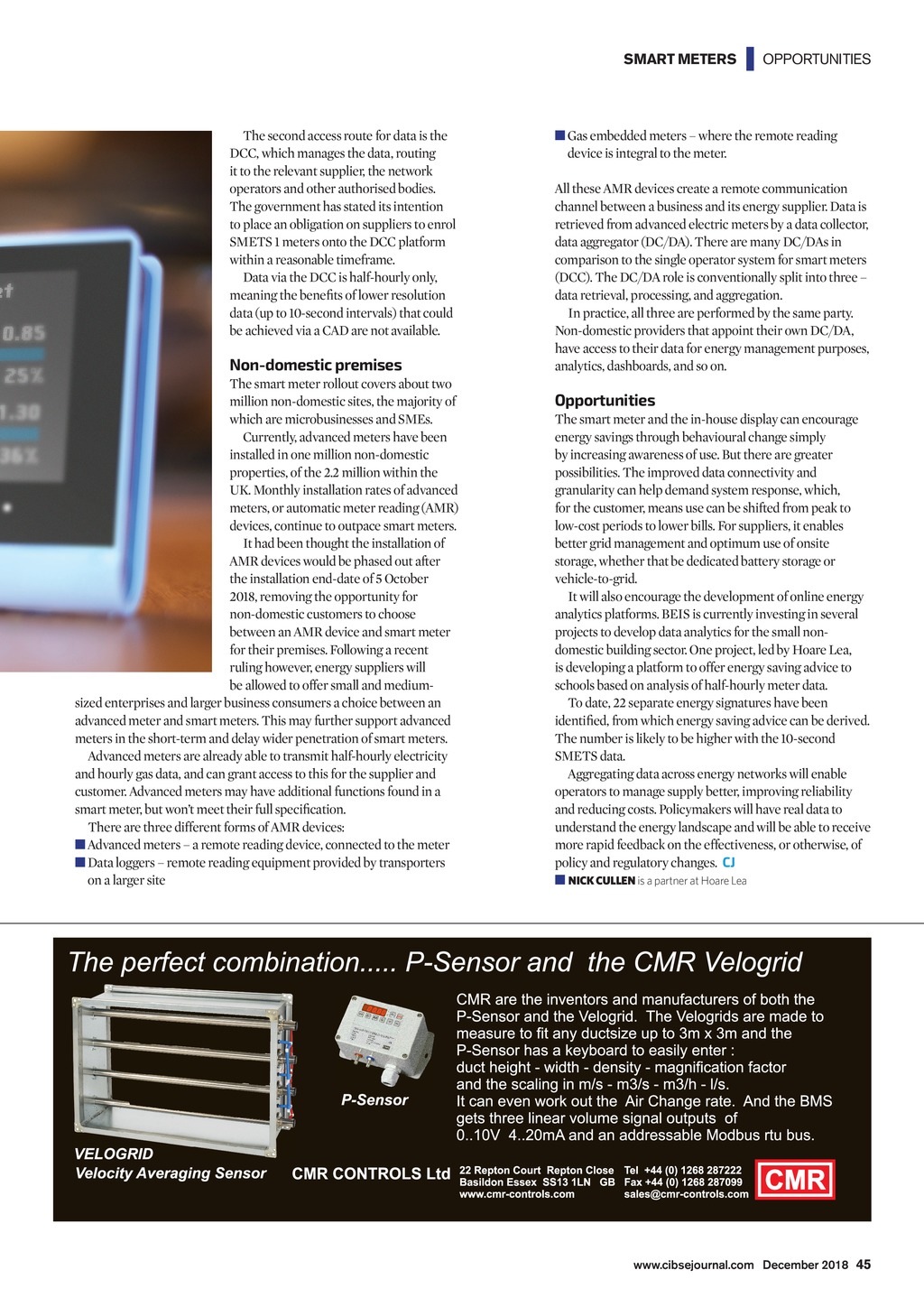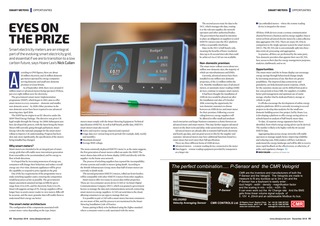


SMART METERS | OPPORTUNITIES EYES ON THE PRIZE Smart electricity meters are an integral part of the evolving smart electricity grid, and essential if we are to transition to a low carbon future, says Hoare Leas Nick Cullen A ccording to ONS figures, there are about 25 million electricity and 21 million domestic gas meters operated by energy companies serving domestic and small non-domestic premises in Great Britain. As of September 2018, there were around 13 million smart or advanced meters being operated. Of these, just over eight million were for electricity. The governments smart meter implementation programme (SMIP), which began in 2013, aims to offer smart meters to every consumer domestic and smaller, non-domestic sector by 2020. Other premises in the non-domestic sector have been required to use advanced metering since April 2014. The SMIP has its origins in an EU directive under the 2009 Third Energy Package. The directive was given UK legal weight through the Energy Act 2008. Subsequent acts have developed the powers, with the latest being the Smart Meters Bill currently going through parliament. Smart Energy GB is the national campaign for the smart meter rollout to improve UK understanding. Progress has been slow and, more significantly, the specification of the meters being installed has changed. Why smart meters? Smart meters are intended to be an integral part of smart energy grids that will enable more intermittent generation from renewables to be accommodated, and for energy to flow in both directions. It is hoped that by increasing awareness of energy use, consumers will change their behaviour and reduce overall energy use. Over time, domestic appliances will be given the capability to respond to price signals on the grid. One of the key requirements of the programme was to make switching supplier easier, ensuring the competition would keep prices as low as possible. The governments impact assessment assumed savings on bills for gas to range from 3.5 to 5.5%, and for electricity from 1.5 to 4%. Smart GB suggests savings of 2%. Energy suppliers will no longer have to send a meter reader to view meters. Bills will be accurate, and the more granular data will enable them to understand their energy use better. The smart meter architecture The configuration of the components associated with a smart meter varies depending on the type. Smart Smart meters are intended to be an integral part of smart energy grids meters must comply with the Smart Metering Equipment Technical Specification (SMETS). As well as half-hourly profile data, SMETS 1 smart meters must also record: Active and reactive energy, imported and exported Usage data over various long-term periods (for example, daily, weekly and monthly). Maximum demand Average RMS voltage. The most commonly deployed SMETS 1 meter is, as the name suggests, the first generation of smart meters rolled out under the SMIP. The meter shares data with an in-home display (IHD) and directly with the supplier via the home area network. The process of switching suppliers has exposed the incompatibility of some systems and results in meters going dumb. According to the British Infrastructure Group, more than half of smart meters are currently in dumb mode. The second generation SMETS 2 meters, rolled out from October, will be compatible with other SMETS 2 meters from other suppliers. Smart meters offer two routes to access data within properties. These are via a consumer access device (CAD) or via Smart Digital Communications Company (DCC), which was granted a government licence to manage the data and communications network connecting smart meters to energy suppliers. A CAD can send data to the cloud, allowing consumers to use apps to manage their use. It is possible to pair a CAD with a smart meter, but most consumers are not aware of this, and the process is not mentioned in the Smart Metering Installation Code of Practice. Future pairing is likely to be facilitated using the Zigbee standard where a consumer enters a code associated with the meter. 44 December 2018 www.cibsejournal.com CIBSE Dec18 pp44-45 Smart meters.indd 44 23/11/2018 16:09